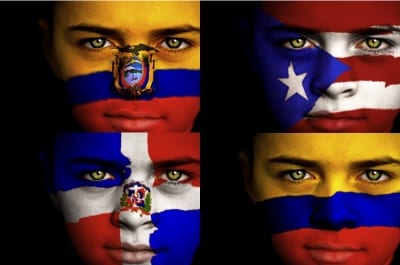
Latin America is the home of dances as varied as the stately rumba and the racy salsa. It ranges over searing deserts, rocky heights, and sultry jungles. Perhaps it should not be a surprise, as a new study published this week in the Proceedings of the National Academy of Sciences shows, that its people run the genetic gamut as well.
Researchers from NYU and Stanford gathered DNA from 100 people, each with ancestry from one of four Latin American populations: Colombian, Dominican, Ecuadorian, and Puerto Rican. History tells us to expect that these Latino populations should be a mixture of Native American, European, and African populations. By comparing the Latino DNA with reference individuals’ DNA from these three source populations, using an analysis similar to that of 23andMe’s Ancestry Painting feature, the researchers found stark genetic differences between the Latino groups, and between individuals within each group.
The study found that Latino populations differ markedly in the contribution of the source populations. In Ecuador and Colombia, there is typically little African contribution to ancestry, and most individuals are genetic mixes of European and Native American. But in the Caribbean locations of Puerto Rico and the Dominican Republic, at the western reach of the African slave trade, people typically include substantial African ancestry.
Within each of these populations, individuals vary widely in their genetic ancestry composition. In the Colombian sample, for instance, there are individuals that are essentially fully European, people that are 50/50 European/Native American, and people that are 40/40/20 European/African/Native American.
Besides being a fascinating exploration of natural history, this study suggests that there may be practical consequences to Latin American genetic diversity. This is because medical genetic research can be more difficult in diverse populations. In the case of association studies, the name of the game is to study two groups of people who differ only with respect to whether they have the disease of interest or not; people in the disease group should have the same mix of age, gender, ancestry, etc. as in the non-disease group. The genetic diversity of Latin American populations may hinder such studies because of the difficulty in building genetically-matched groups. The study’s authors suggest that new techniques may need to be developed to carry out genetic research in Latin America.